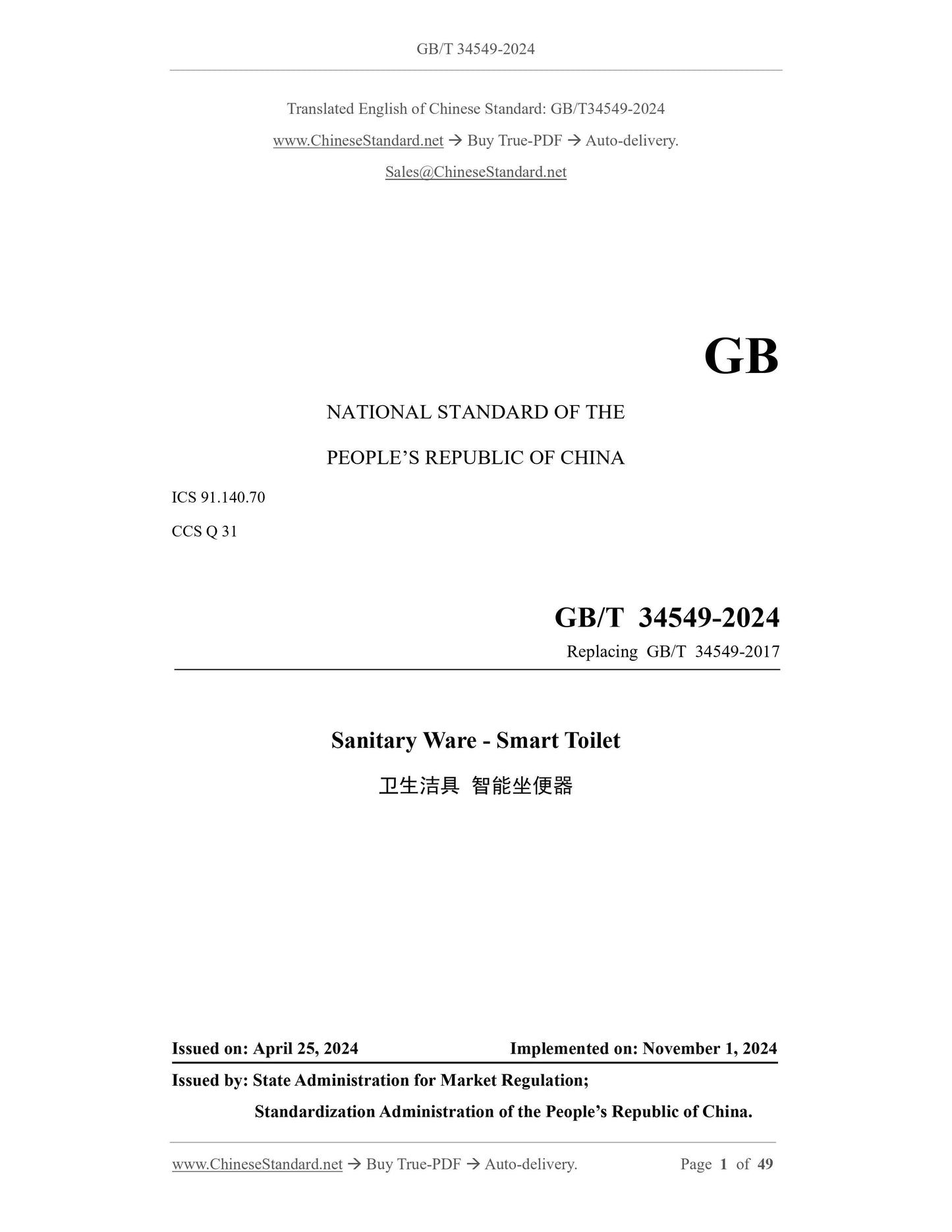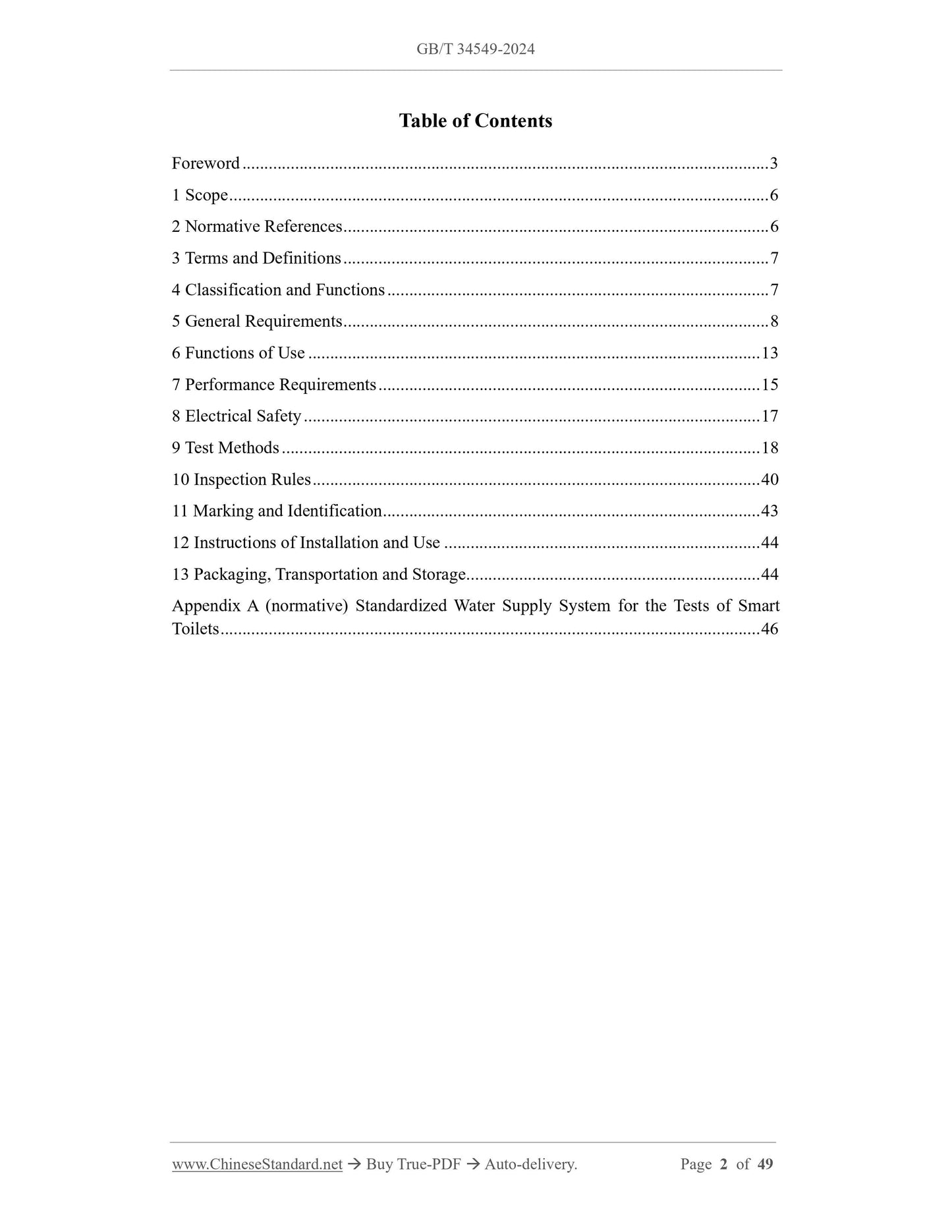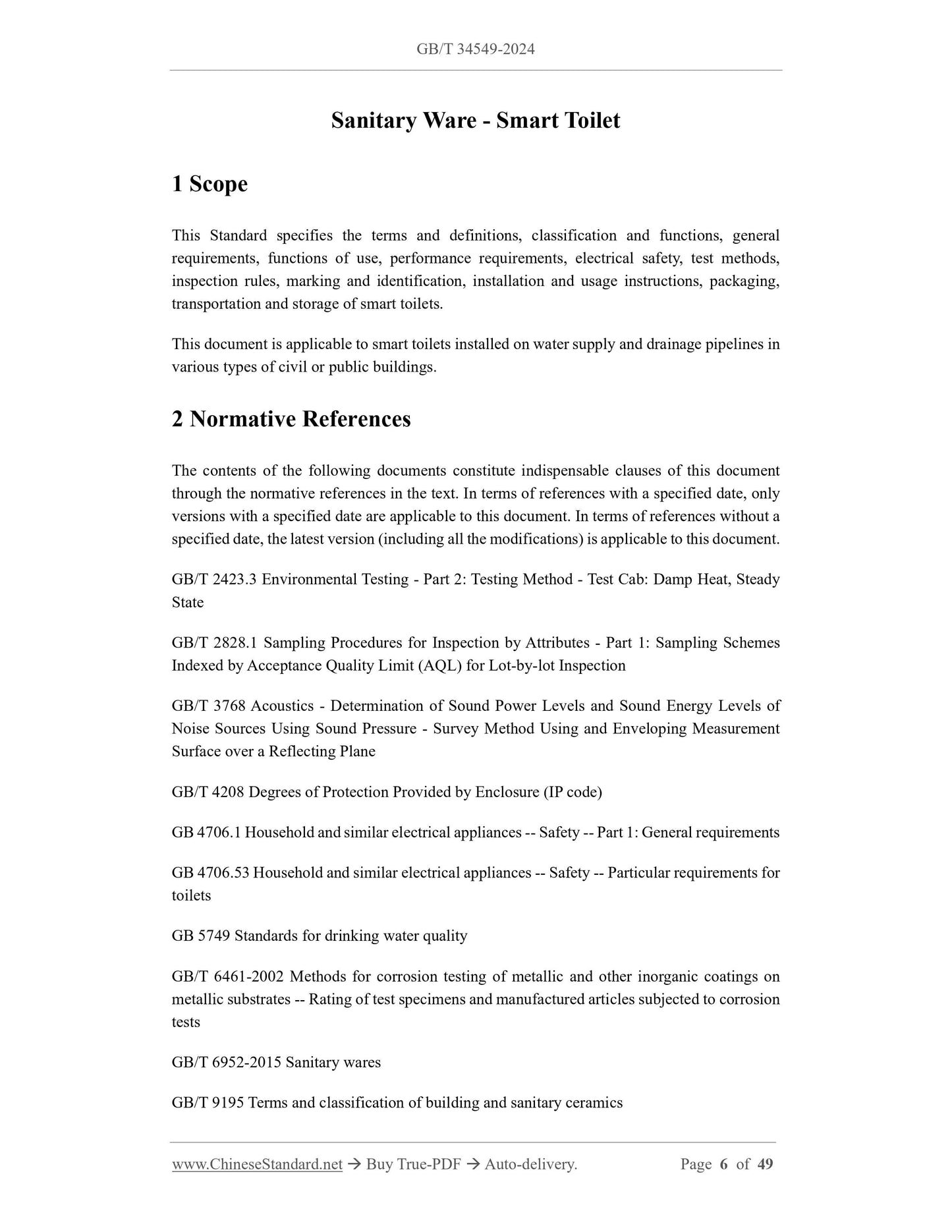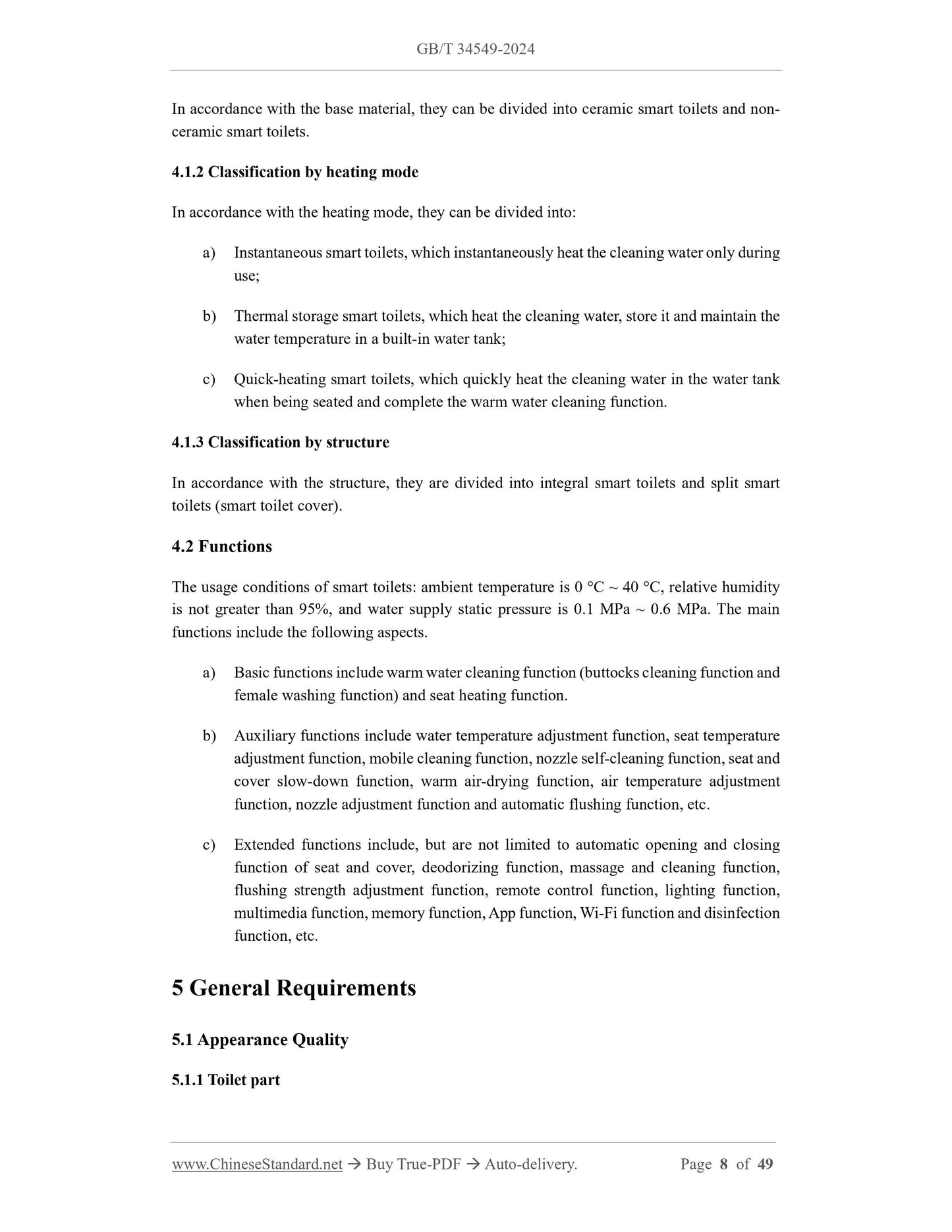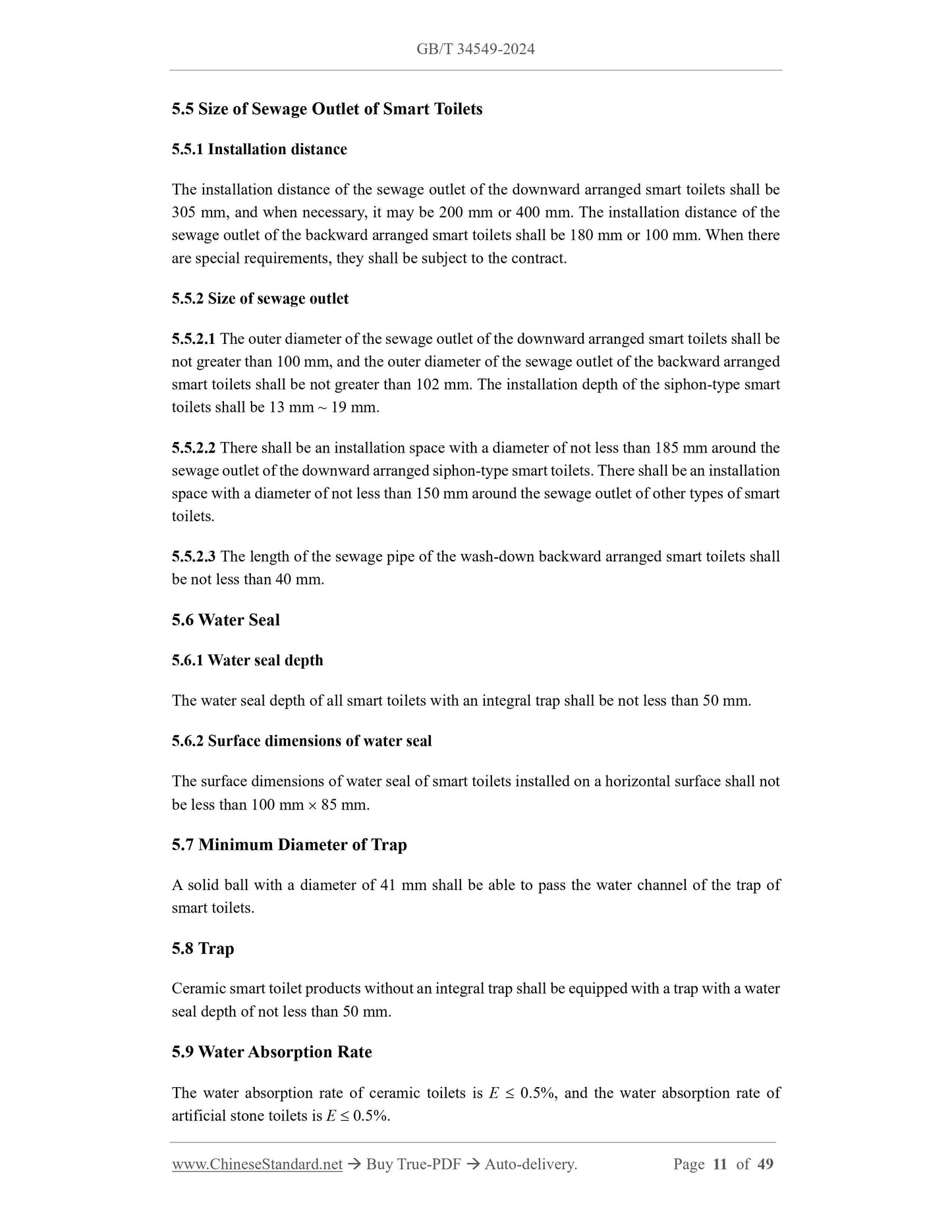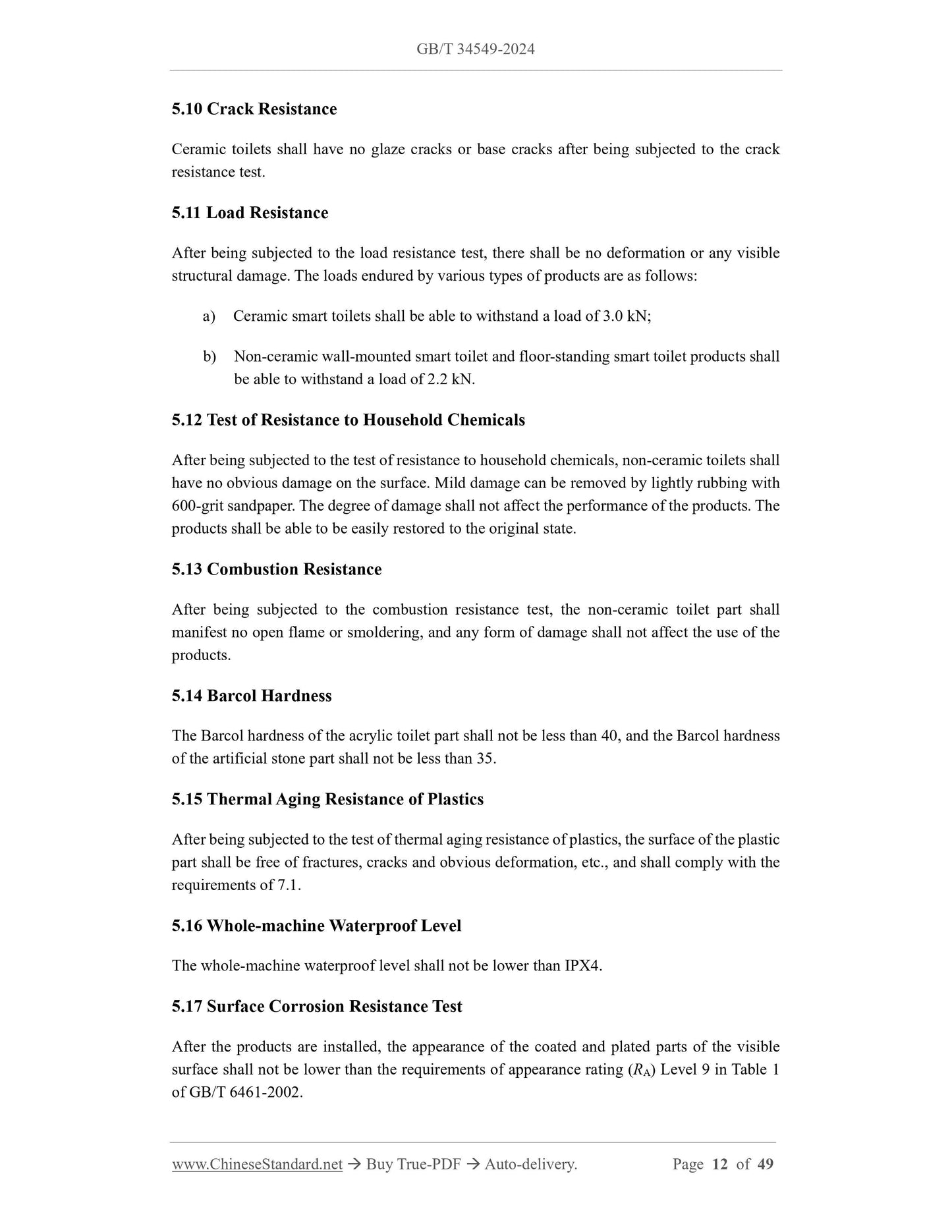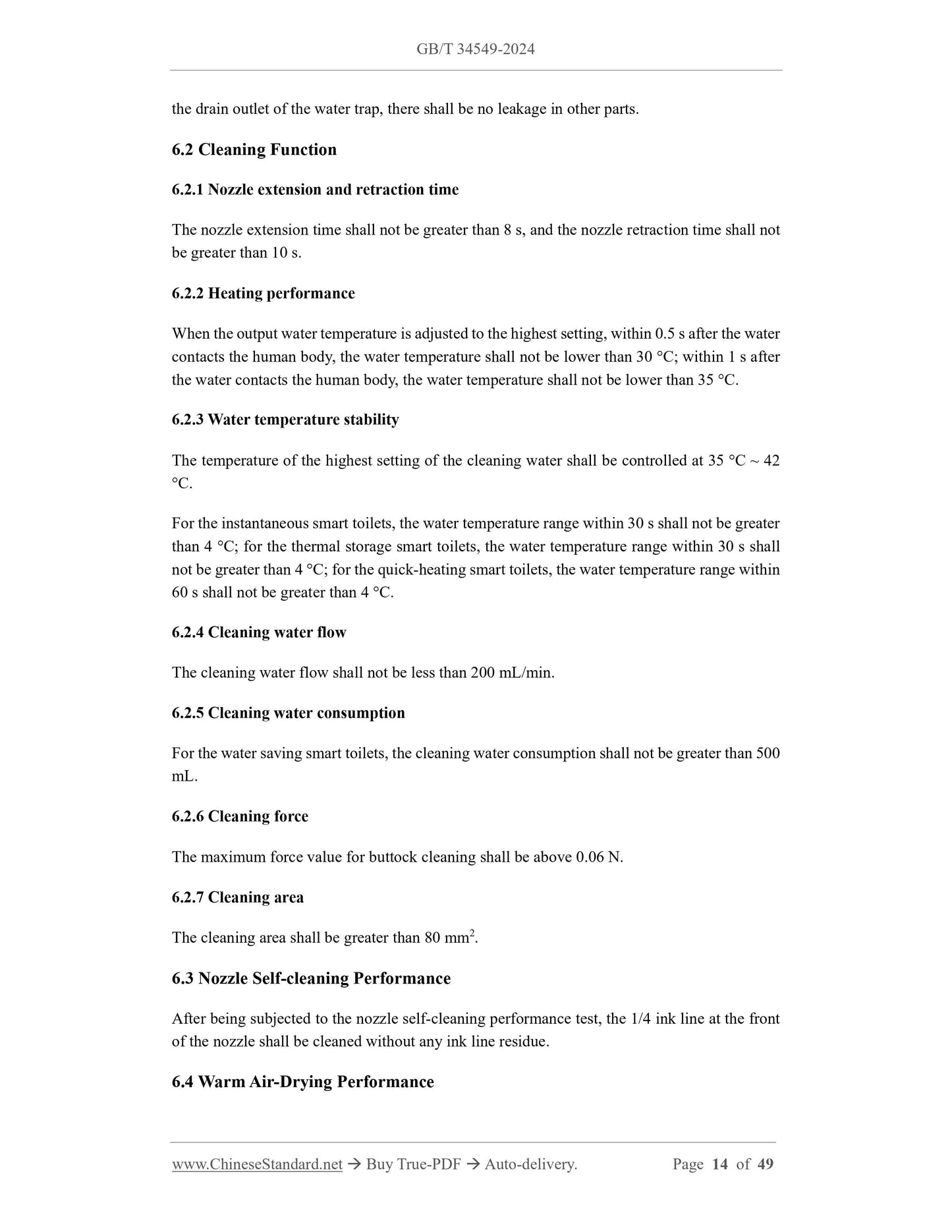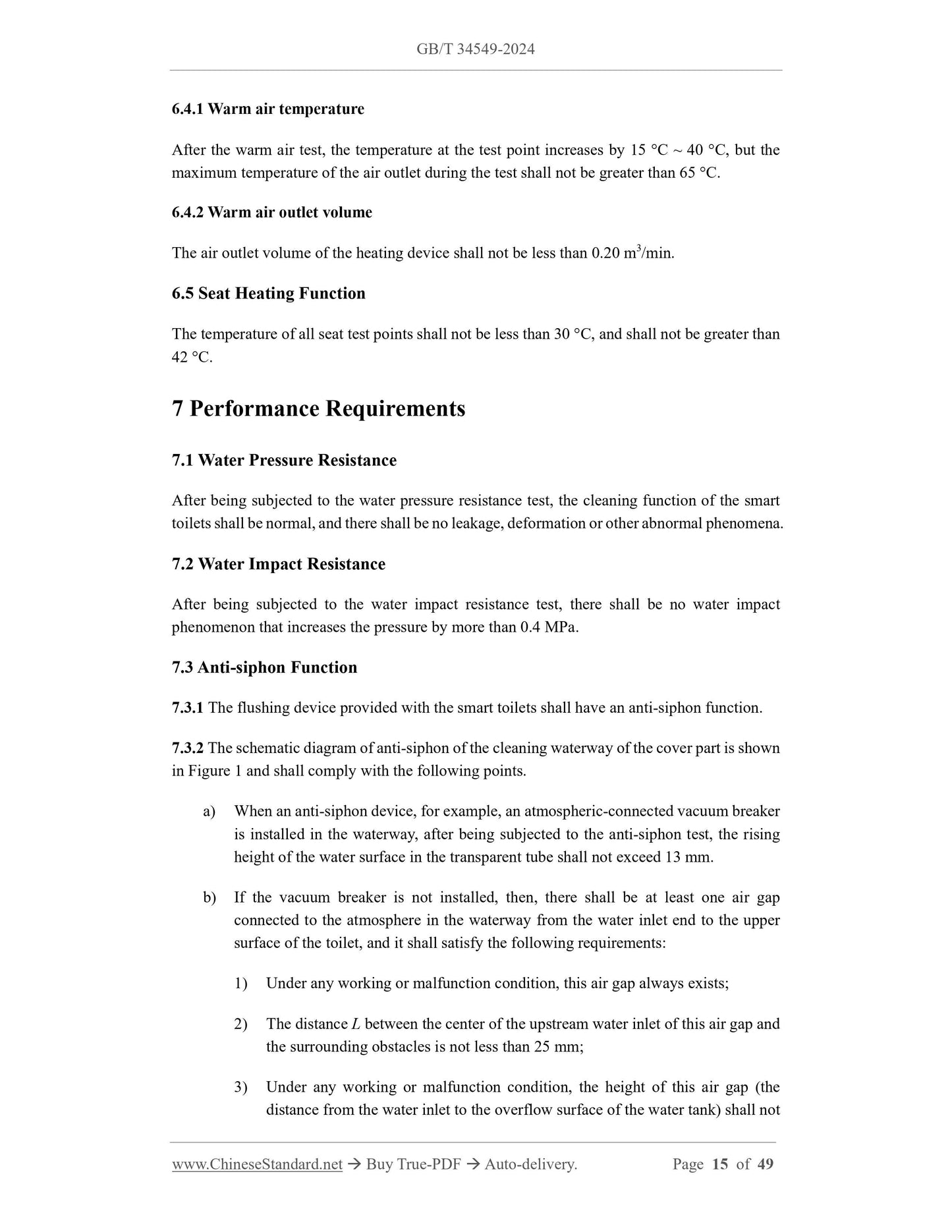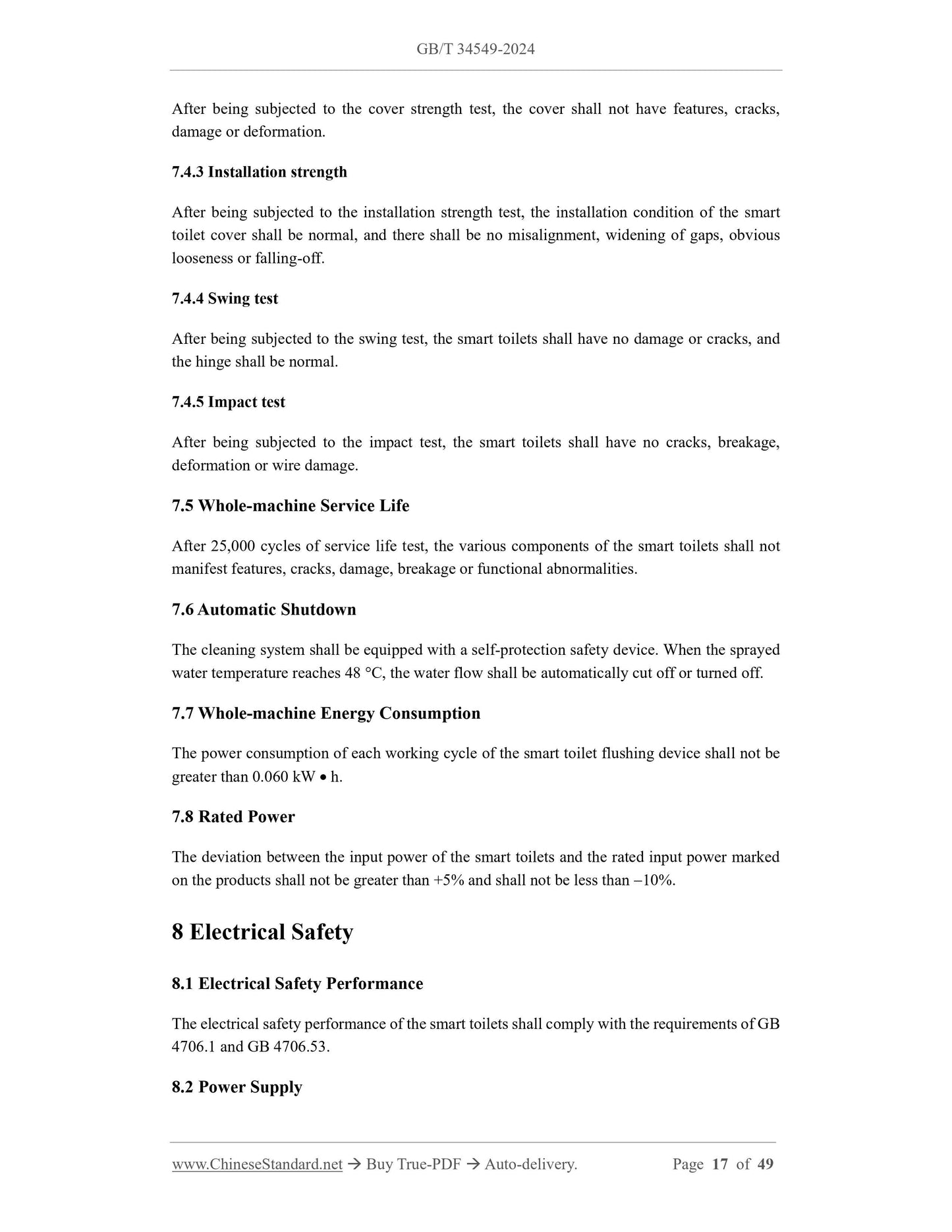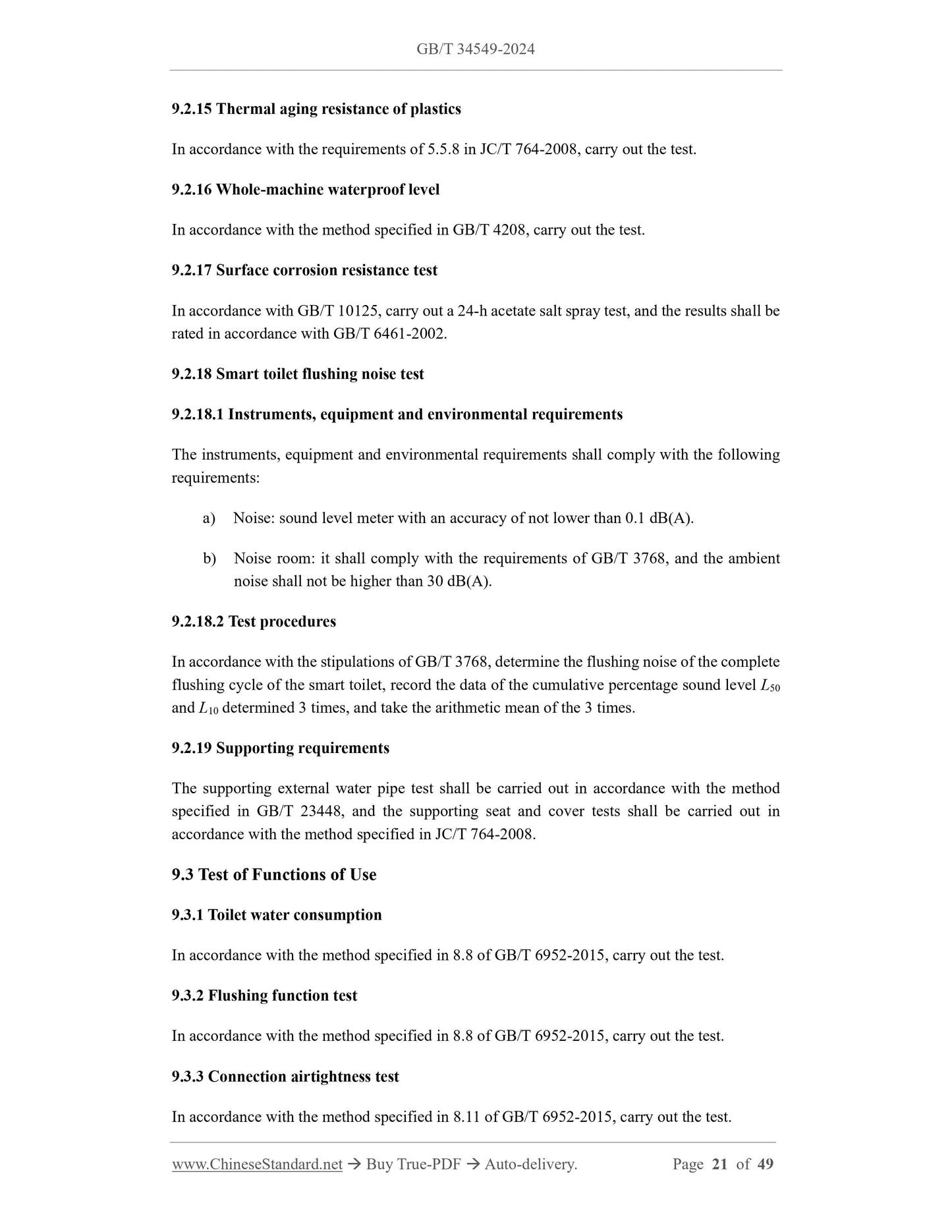1
/
of
12
www.ChineseStandard.us -- Field Test Asia Pte. Ltd.
GB/T 34549-2024 English PDF (GB/T34549-2024)
GB/T 34549-2024 English PDF (GB/T34549-2024)
Regular price
$640.00
Regular price
Sale price
$640.00
Unit price
/
per
Shipping calculated at checkout.
Couldn't load pickup availability
GB/T 34549-2024: Sanitary ware - Smart toilet
Delivery: 9 seconds. Download (and Email) true-PDF + Invoice.Get Quotation: Click GB/T 34549-2024 (Self-service in 1-minute)
Newer / historical versions: GB/T 34549-2024
Preview True-PDF
Scope
This Standard specifies the terms and definitions, classification and functions, generalrequirements, functions of use, performance requirements, electrical safety, test methods,
inspection rules, marking and identification, installation and usage instructions, packaging,
transportation and storage of smart toilets.
This document is applicable to smart toilets installed on water supply and drainage pipelines in
various types of civil or public buildings.
Basic Data
| Standard ID | GB/T 34549-2024 (GB/T34549-2024) |
| Description (Translated English) | Sanitary ware - Smart toilet |
| Sector / Industry | National Standard (Recommended) |
| Classification of Chinese Standard | Q31 |
| Classification of International Standard | 91.140.70 |
| Word Count Estimation | 38,377 |
| Date of Issue | 2024-04-25 |
| Date of Implementation | 2024-11-01 |
| Older Standard (superseded by this standard) | GB/T 34549-2017 |
| Issuing agency(ies) | State Administration for Market Regulation, China National Standardization Administration |
Share
